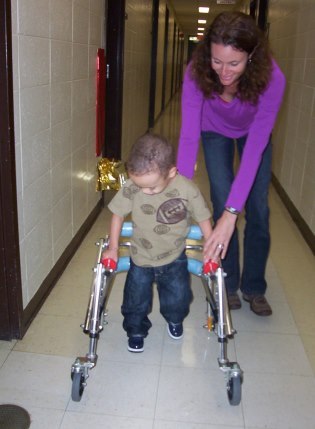OHOA Module: Orientation and Mobility in Everyday Routines

Learning Outcomes
- Understand how an effective travel routine can support a student's practice of O&M skills.
- Understand the "10 Principles of Effective Travel Routines" and how to apply intervener strategies to support student learning related to each principle.
- Understand how environmental features help a student learn about the concepts of space and distance.
- Understand how environmental features can be sequenced to help a student know where he or she is in space (orientation).
- Understand that the skills a student acquires in the context of travel routines have a direct, positive impact on his or her inclusion in family, school, and community life.
- Understand that the skills acquired in the context of travel routines lead to higher levels of safe, efficient, and independent travel.
Development Team
- Mary Tellefson (Lead)
- Carla Brown
- Ellen Bowman
- Edgenie Bellah
Use of this Module
This module is available for free on our website. We invite anyone to use these materials. Please note that NCDB does not provide CEUs, certificates, or confirmation of completion.
Suggested Citation
Tellefson, M., Brown, C. Bowman, E., Bellah, E. (2015, September). Orientation and mobility in everyday routines. In National Center on Deaf-Blindness, Open Hands, Open Access: Deaf-Blind Intervener Learning Modules. Monmouth, OR: National Center on Deaf-Blindness, The Research Institute at Western Oregon University.
